The average person eats, drinks and breathes between 78,000 and 211,000 microplastic particles every year – and that is considered an underestimate.
Research entitled ‘Human Consumption of Microplastics’ published in Environmental Science & Technology presents an analysis of 26 studies from around the world and calculates the average amount of microplastics found in common consumables.
Microplastics are fragments of any type of plastic less than 5mm in length, according to the U.S. National Oceanic and Atmospheric Administration and the European Chemicals Agency. Experiments showed that microplastics elicit adverse health effects mainly by causing inflammation, oxidative stress, and neurotoxicity, among others.
the biggest known source of microplastic which enters our bodies is bottled water. Beer is next

As our infographic shows, the biggest known source of microplastic which enters our bodies is bottled water. Based on four separate studies, the average number of particles per liter is 94.
Beer has the second highest number, at 32, but it is that in third place which may cause the most alarm. Air inhaled by humans, based on two studies conducted in France and Turkey, contains an average of 9.80 particles per m³.
For reference, the EPA’s Exposure Factors Handbook says that a 31-51 year old inhales an average of 16 m³ of air per day.
A 2018 study found that 93% of bottles sampled from 11 different companies and purchased from nine different countries showed some sign of microplastic contamination
Beyond this is the fact that, try as hard as we may, microplastics have a way of finding their ways into our foods — as evident in these finding:

Microplastics in seafood
Microplastics have been found in a wide variety of fish species, including northern whiting, grouper, seabass, haddock, squid, mackerel, and canned fish including tuna and sardines. Shellfish aren’t safe either: Shrimp, crabs, scallops, clams, oysters and mussels all have been found to contain microplastics.

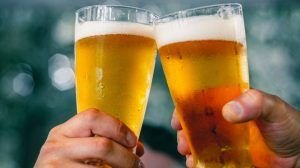 Microplastics in water, beer, milk, etc.
Microplastics in water, beer, milk, etc.
According to the World Health Organization, microplastics can reach tap water from many avenues, including when they run off land and reach waterways that provide drinking water and sneak through treatment processes.
In bottled water, packaging is the most likely source of the contamination. A 2018 study found that 93% of bottles sampled (from 11 different companies and purchased from nine different countries) showed some sign of microplastic contamination.
The biggest risk of microplastics in breast milk comes from storing the milk in plastic bags
Both industrial and craft beer have been found to include microplastics, according to multiple studies. Other beverages including milk, iced tea, soft drinks, energy drinks, and wine have also been found to contain microplastics.

Microplastics in breast milk
The biggest risk of microplastics in breast milk comes from storing the milk in plastic bags, researchers have found. Baby bottles and accessories pose the risk of microplastics leaching into breast milk or other liquids.
A 2022 study of 34 mothers in Italy spotted microplastics in 75% of their breast milk even though the milk was not collected or stored in plastic.
This is concerning because infants would be exposed to potentially toxic effects of any chemicals associated with those microplastics.
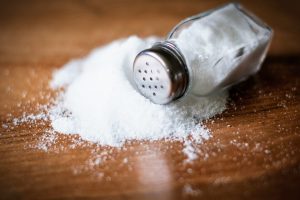 Microplastics in salt
Microplastics in salt
A recent study led by Andalas University in Indonesia has raised concerns about the presence of microplastics in table salt, echoing similar findings in bottled water.
the highest concentrations of microplastics to occur in sea salt, especially if the salt came from Asian regions
The research, involving 21 table salt brands, revealed that each contained microplastics, including fragments, fibers, films, and pellets.
These molecules are associated with serious health risks, including cancer, heart disease, dementia, and fertility issues.
Research also found the highest concentrations of microplastics to occur in sea salt, especially if the salt came from Asian regions.
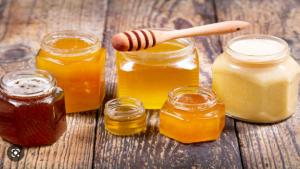 Microplastics in honey
Microplastics in honey
A review study found that both industrial and craft honey contain microplastics, mainly in the form of fibers.
Particles of at least four different types of plastics were spotted in honey from industrial and craft samples, as well as in flowering plants and sugars from Germany, France, Italy, Spain, Mexico, Switzerland, and other countries.
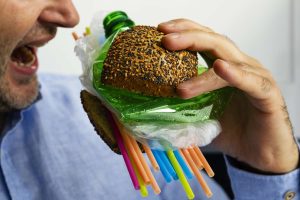

Microplastics in processed foods
Takeaway containers and disposable cups and vessels contain microplastics that could then transfer to the food they’re holding.
Six studies published between 2014 and 2021 found nearly a dozen different kinds of microplastics in takeaway containers of different shapes and sizes—along with cups, teabags, and baby bottles.

Microwaving plastic containers
Microwaving plastic containers can contaminate food by releasing microplastic particles, and zapping may also release endocrine-disrupting chemicals such as phthalates that are used as plasticizers to make containers more flexible.
Six studies published between 2014 and 2021 found nearly a dozen different kinds of microplastics in takeaway containers
In some cases, just opening plastic packaging, particularly bottle caps, can lead to microplastics plopping into your food or beverage.
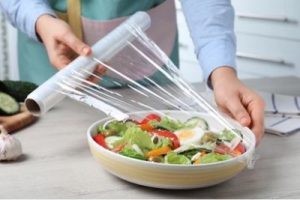

Packaged meats such as chicken breasts and turkey escalopes have been found to contain microplastics fragments.
The microplastics contamination found in these meat samples likely came from the packaging in polystyrene trays.
A 2022 study of 34 mothers in Italy spotted microplastics in 75% of their breast milk even though the milk was not collected or stored in plastic
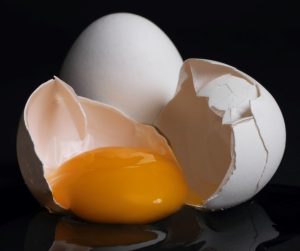 Microplastics in eggs
Microplastics in eggs
A 2022 study found that chicken eggs purchased from local supermarkets in China (which produces more than 40% of the world’s eggs) contained microplastic particles.
Each egg averaged multiple microplastic particles, most of which were polyethylene, which is a type of resin used widely in everything from food wrap to fuel tanks. The study showed contamination to be higher in the yolk than the white, with no significant change after cooking.
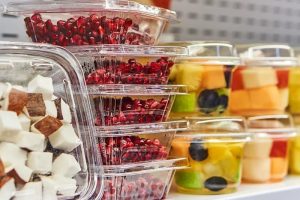

Microplastics in plants
Apples and other fruits and vegetables such as pears, broccoli, lettuce, and carrots have been found to be contaminated by nanoplastics that have been absorbed by the plants themselves.
Researchers note that the nanomaterials accumulated in those plants “may be transferred to the consumer through diet,” but that more research on impacts is needed.
With additional resource from Statista


